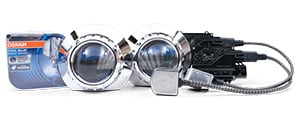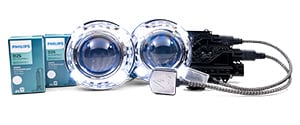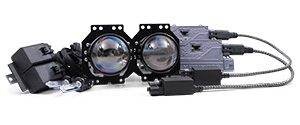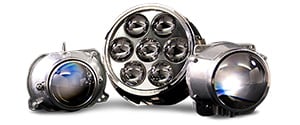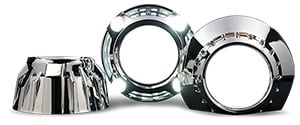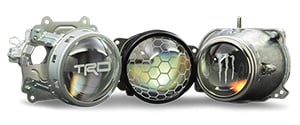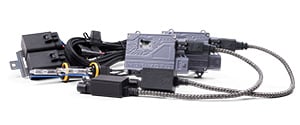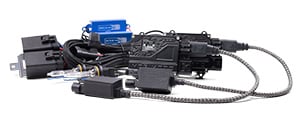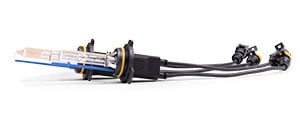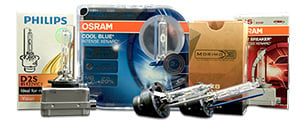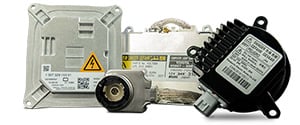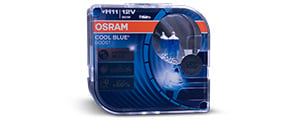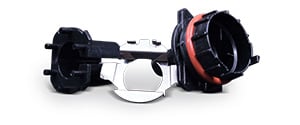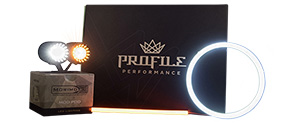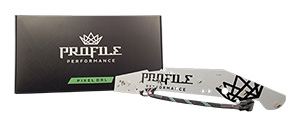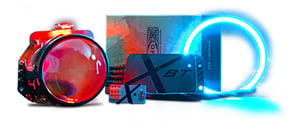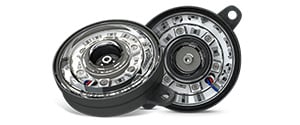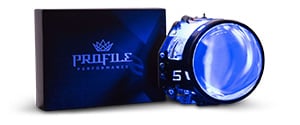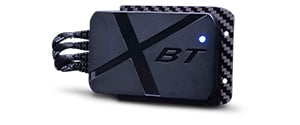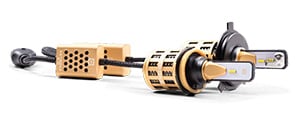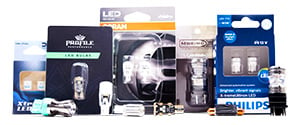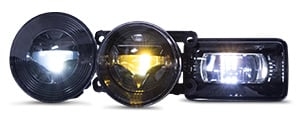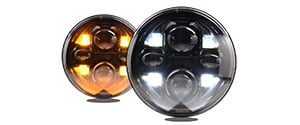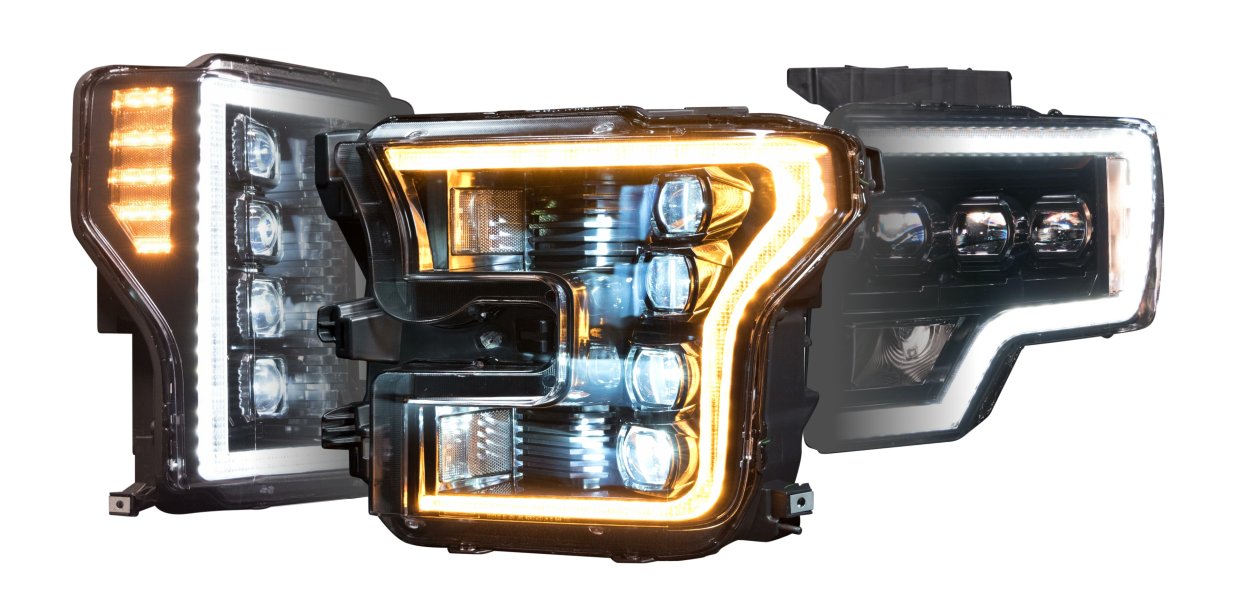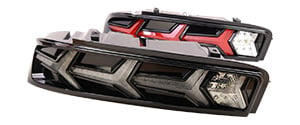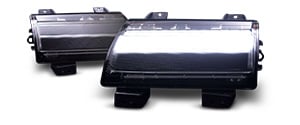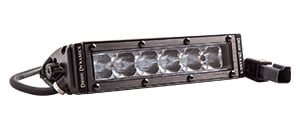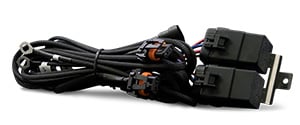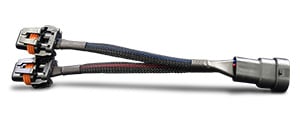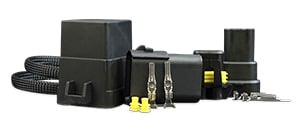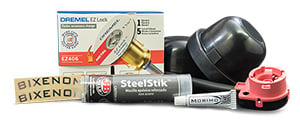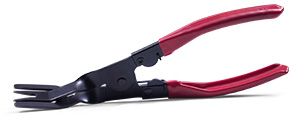Tech Tip: What You Need to Know About Morimoto 2Stroke 3.0
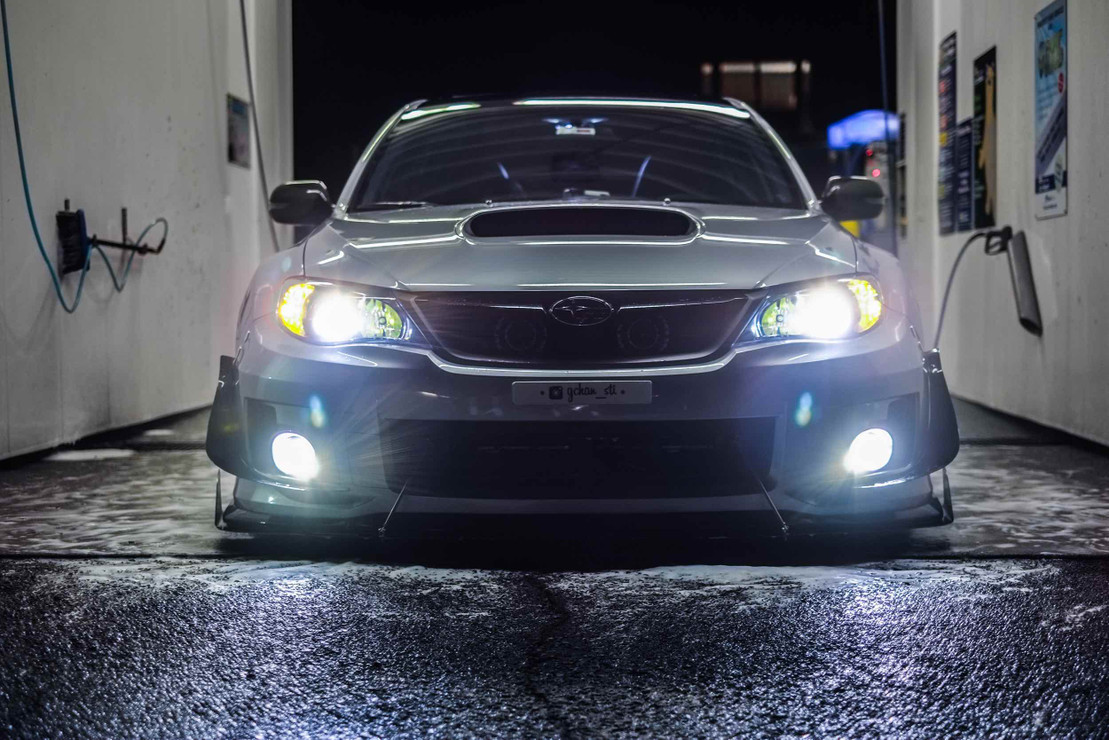
Q: Is 2stroke 3.0 brighter than Ultra 2?
A: If it's a question about how much light output at the light source, then NO. The light source is about 40% less than the Ultra2; however, it boasts an unbeatable focus that contributes to its ability to illuminate the road properly. The bulb often exceeds Ultra2, especially in smaller to mid-sized reflector housing.
The larger (horizontally longer) Ultra2 or SV4 are substantially brighter like, the higher raw lumen bulb. Do not hesitate to suggest Ultra2 and SV4 for larger optics, as both are pros and cons.
The 2stroke 3.0 remains the top product in terms of beam quality regardless of optics.
Q: What about Lux?
A: Lux reading can only be a valid reference IF measured in the same distance and measured at the same measuring spot in the same optics system. For example, a 500lux measurement read at 10m becomes only 347lux at 12m.
Having higher lux in one optics does not mean it will have higher lux in another housing. It's the resulting number of a particular application in a specific measuring situation.
The proper answer is:
In low beam reflector optics of vehicle ____ measured at a distance of ___m ( or feet), measured spot 0.86 degrees down 1.3 degrees to the right ( distance measuring spot), it measured ___ lux.
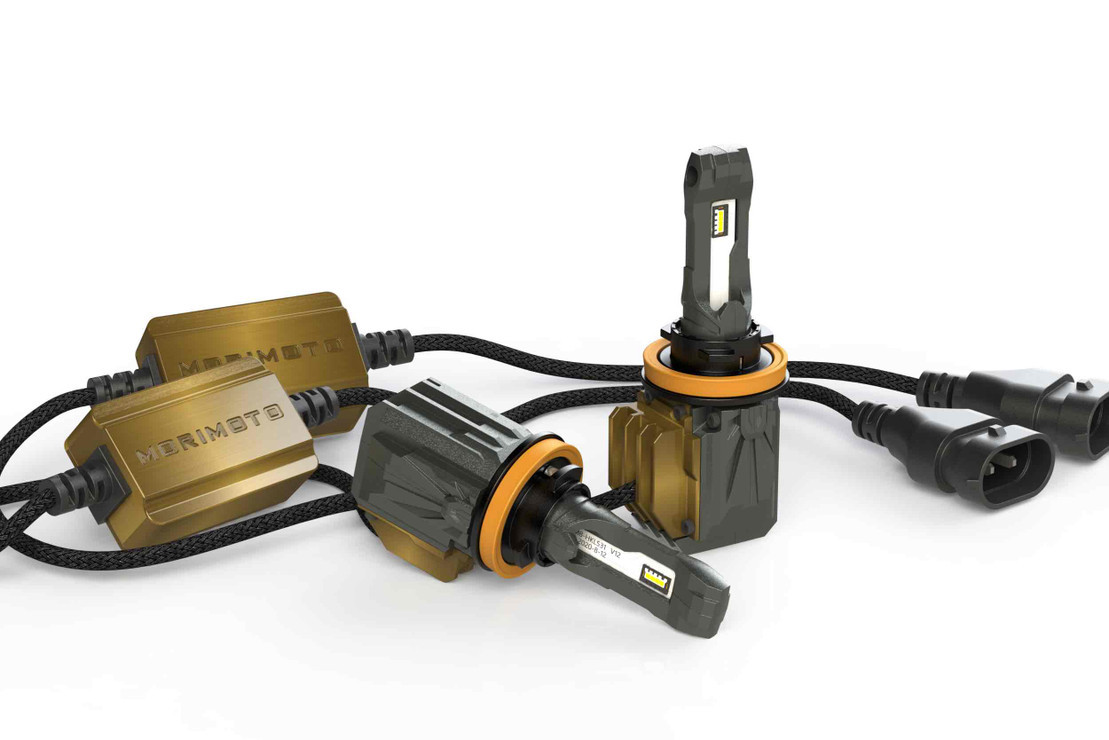
Q: Only 2,100lm (2,600lm initial)? There are so many bulbs rated higher.
A: 2,100lm is the minimum output number at heated controlled environment measurement. Many LED bulbs advertise selected LED's theoretical absolute max number, most often never be actual outputting lumen.
The 2Stroke 3.0 was run through a 60C(140F) heated oven for 1h and then measured in an "integrated sphere" device to assure a minimum of 2,100lm is outputting.
In theory, max output from 2 x HKL351.TE emitters can be 4,800lm (If we want to state lumen rating as the cheapest LED bulbs marketing describes). Unless measured properly with proper equipment, lumen ratings are very volatile marketing numbers.
It is OK to admit that there are bulbs with higher lumen output. We did not go that route because more depth comes from true optical strength.
Q: How does 2Stroke's 3.9 Lux higher result compare to Ultra2 or SV4 in the same housing?
A: The lumen density of LED is much higher than the other two, thus causing this result. The HKL531.TE emitter has a near-identical size of filament emission area.
The Ultra 2 has about 2.5 times larger chip area compared to HKL531.TE Ultra 2 1,750lm from 11.6mm2.
Lumen density 150lm/mm2 2ST3 1,050lm from 4.46mm 235lm/mm2 filament ortho view box size is 6.3mm2 per side (if observed as 2 sided right and left selected view)
Illumination can be observed at the 3 and 6 o'clock mark, essentially a horizontal line. Ultra 2 effectivity is similar to having a filament output of 6.3mm2 x 150lm(per side) x 2 total 1,890lm
2Stroke 3.0 effectivity resembles having filament output of 6.3mm2 x 235lm(per side) x 2 total 2,961lm
There will be near filament-sized box illumination for a larger chip LED bulb like Ultra2 as an accidental overlay overlaps the intended beam pattern. The amount of overlap is an uncertain parameter. Some overlap may very well add intensity, but some do not and cannot gain intensity. That is the probability difference you see in many optics with large housings.
Q: Some halogen bulbs output 2,100lm+ at working voltage (14.4V). How does the 2Stroke 3.0 compare?
A: The 2Stroke 3.0 chip area is smaller than the halogen filament overall ortho view box. In the center, 80% of the filament has the highest output in halogen, and the 2Stroke 3.0 chip duplicates this critical illuminated area of the filament. A LED chip is generally more prominent than a halogen filament, but not in 2Stroke's case. 2Stroke 3.0's chip packs all lumens within a critical center of 80% filament size.
Also, LED typically shoots more powerful illumination at a straight angle, while filament illuminates 360 degrees. This range of illumination creates a disadvantage in terms of creating a full-beam distribution range. In the reflector's case, the 2Stroke 3.0 shoots a much stronger beam because of this straight angle limitation. The Outer segment of the reflector handles the hot spot of beam distribution.
The 2Stroke's LED chip has a relatively higher ratio of output around 3 and 9 o'clock ( where hotspot occurs on the reflector), which results in a much higher beam center focus even from a halogen bulb with the same lumen output.
The downside is the lack of foreground illumination because the direct above segment handles the lower angle beam in the reflector.
Q: Does the 2Stroke 3.0 work well in a projector?
A: Much less efficient compared to a reflector. In projector optics, the hot spot distributes through the center back area of the reflector bowl, where all LED bulbs fail to illuminate directly above. LED bulbs sometimes cause a shadow at the 6 o'clock point of illumination).
Some projectors are composed of a beam using "overlap" construction. Some larger chip LED bulbs may positively accidentally achieve higher beam center focus due to this effect.
Projector performance will be case by case. How much beam center overlap will determine how effectively 2Stroke 3.0 can perform in the projector.
Q7: Will dust gets in with internal circulation cooling?
No. It is entirely internal closed-loop circulation. However, it is critically important that customers "seal the housing" if the headlamp comes with dust caps and covers.
A word of caution to the customer: do not use the 2Stroke 3.0 bulb if the user cannot install the dust cover properly. Leaving the opening will cause dust to enter the headlamp, and the bulb can blow the dust around inside. This is not a product-level issue since the headlamp housing should never be left open; however, I can see some customers using it without a dust cap or cover.
If the dust cover proves incompatible, suggest a compatible-sized rubber dust cover along with the product recommendation.
.png)
